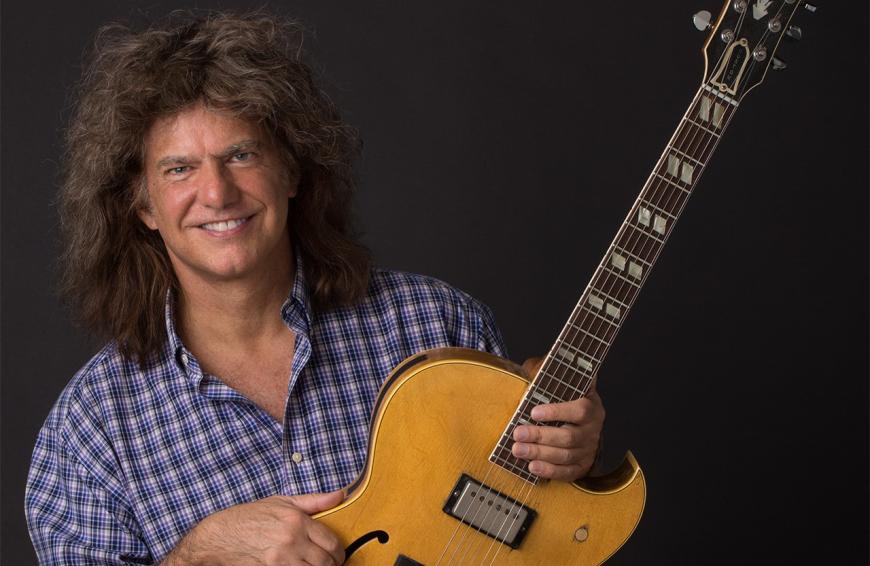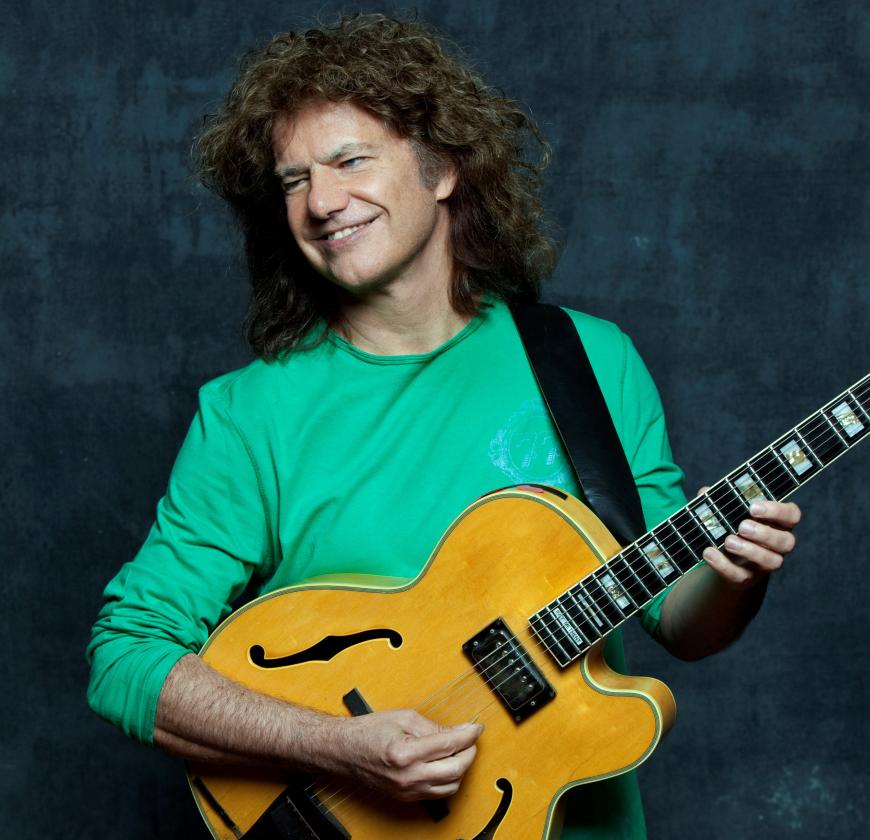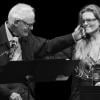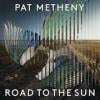
Pat Metheny arrived on the music scene in the mid-1970s just as the fusion movement crested, a wave propelled in part by a generation of ostentatiously virtuosic guitarists who attained the pop cultural stature of minor rock stars. Metheny could shred with the best of them, but from the start he made it clear that rock ’n’ roll was just one arrow in his voluminous quiver. A prodigy who was offered a professorship at the University of Miami at 18, he possessed a cosmopolitan perspective that didn’t shy away from the wide-open spaces of his Midwestern upbringing.
As a composer, improviser, bandleader, and recording artist, Metheny has produced a singularly expansive body of work that defies categorization. Pervasively influential, he’s a protean artist inextricably tied to but not defined by jazz.

Combining rigorous intelligence with an obsessive work ethic, he’s pushed the limits of electronic musical technologies while also expanding the possibilities of acoustic guitars. Drawing on sounds from around the world, with a particular affinity for Brazilian and Middle Eastern currents, he possesses a gift for lush harmonies and elegant melodic invention. There have been times, particularly with the electroacoustic Pat Metheny Group, when it’s easy to get lost in the surface sheen of his music. But even his most polished and lapidary recordings often contain intriguing frictions underneath the bright, lulling lyricism.
Bright Size Life (ECM, 1976)
After several initial recordings with vibraphonist Gary Burton, whose ear for spotting brilliant young guitarists was nonpareil, Metheny introduced himself as a leader with Bright Size Life, which ranks among the most auspicious debut albums in jazz history. Featuring seven Metheny originals and a concluding blast of Ornette Coleman blues, the album is fascinating both for what it augers and the tensions roiling the trio. While drummer Bob Moses serves as a rhythmic referee, the famously self-regarding electric bassist Jaco Pastorius, who was on the cusp of releasing his own star-making debut album, wrestles for control of the proceedings with Metheny, who tries to avoid taking Jaco’s bait. Playing 6- and 12-string electric guitars, he already possesses an instantly recognizable sound.
80/81 (ECM, 1980)
Metheny rapidly gained an avid following with a series of albums for ECM featuring pianist and keyboardist Lyle Mays, his key collaborator in the emerging Pat Metheny Group. Rather than riding the popular formula, Metheny made it clear he had his eye on far wider horizons with 80/81, a double album featuring drum maestro Jack DeJohnette and bassist Charlie Haden, who first earned renown two decades earlier as the anchor of Ornette Coleman’s epochal quartet. With the combustible tenor saxophone tandem of Michael Brecker and Dewey Redman (another Coleman confidant), 80/81 features Coleman’s blues-steeped “Turnaround.” Haden contributes “Two Folk Songs,” tracks that reveal a road map from a fellow Midwesterner that Metheny has often explored himself.
Travels (ECM, 1983)
Metheny usually had several projects running at the same time, but the (intermittent) center of his musical universe through the late aughts was the Pat Metheny Group, which is documented in all its lush glory on Travels, a double live album featuring Lyle Mays (piano, synthesizers, electric organ, autoharp, and Synclavier), Steve Rodby (acoustic and electric bass and bass synthesizer), Danny Gottlieb (drums), and Nana Vasconcelos (percussion, voice, and berimbau). Moving between various acoustic and electric guitars and guitar synthesizer, Metheny brings music marked by lavishly imagined textural detail to concert settings. While the tour focused on music from his popular new album Offramp, the band’s book included a wide array of material that embodied the Metheny/Mays musical partnership.
Question and Answer (Geffen, 1990)
One of the era’s essential albums, Question and Answer features a dream trio with bassist Dave Holland and drummer Roy Haynes, whose Caribbean undercurrents give the swinging set an irresistible bounce. There are moments to savor on just about every track, with a requisite hat tip to Ornette Coleman with his rarely played “Law Years,” plus memorable Metheny originals, like the title track and “Change of Heart.” But it’s the guitarist’s first forays into the American Songbook that seal the deal; the trio soars through Jerome Kern’s “All the Things You Are,” and Metheny delivers an exquisite take on the ballad “Old Folks.”
Jim Hall & Pat Metheny (Telarc, 1999)
In hindsight, the pairing of Pat Metheny with Jim Hall, a painterly guitarist a quarter century older who opened many doors for fellow guitar explorers, seems like a no-brainer. Certainly, the results of their encounter, on Jim Hall & Pat Metheny, are consistently revelatory. Running some 73 minutes, the session covers a lot of ground. Six of the tracks were recorded live at Pittsburgh’s Manchester Craftsmen’s Guild, including the two standards (“All the Things You Are” and “Summertime”) and two jazz classics (Attila Zoller’s “The Birds and the Bees” and Steve Swallow’s “Falling Grace”). The studio pieces focus on spontaneous improvisations, offering a front-seat view as Metheny listens and responds to Hall, a telegraphic player with an infectuously puckish sense of humor.
Day Trip (Nonesuch, 2008)
Seeking out older masters for collaborations is one hallmark of Metheny’s career. Another is assembling bands featuring younger players who are in the vanguard representing their instruments. Introduced on Day Trip, Metheny’s trio with bassist Christian McBride and Mexican-born drummer Antonio Sánchez embodies the way that the guitarist thrives on youthful abandon. With the technically dazzling Sánchez lurking near the foreground, the trio’s energy crackles on a program of masterly Metheny originals (including “Calvin’s Keys,” his tribute to Oakland guitar great Calvin Keys).
Side-Eye NYC (V1.IV) (Modern Recordings, 2021)
In much the same way, Metheny’s latest release, Side-Eye NYC (V1.IV), is a live album featuring rising pianist/keyboardist James Francies, in his mid-20s, and mid-30s drummer Marcus Gilmore, grandson of Metheny’s earlier trap set collaborator Roy Haynes. A blend of new tunes and reimagined pieces from the guitarist’s vast catalog, the set feels like a restless test drive, with Metheny looking to see just how far he can push the group. There’s the power-trio crunch of “Lodger” and the soul-jazz funk of “Timeline.” The group takes a celestial journey on “Zenith Blue” and lays down a slinky dance-club groove on “It Starts When We Disappear,” a piece inspired by electronica.
When he’s not tangling with players decades younger, Metheny is still looking to connect with the artists who first inspired him as a young player. Earlier this year he told SF Classical Voice about his ongoing collaboration with legendary lyricist Alan Bergman, who’s still going strong in his 90s. Little of that project has surfaced in public yet, but Metheny made it clear that he’s intensely inspired by Bergman’s work. The guitarist still has songs to sing.




